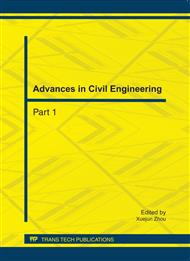p.3057
p.3061
p.3068
p.3073
p.3077
p.3085
p.3089
p.3093
p.3097
Matching of the Pump Lift in the Distributed Power System
Abstract:
We can calculate various pump lifts utilizing the method of solving the pressure balance loop equations in the distributed power system. For the system pumps are set at heat (cold) source and on each branch, if the number of independent loops is less than the pumps, the equations of the pump lift have multiple solutions. When considering the constraint conditions, if we determine the pump lift of the first branch, others can be determined. For the system pumps are set on the main pipes, if we install pumps at heat (cold) source and on each main water supply and backwater pipes, and the pumps of a corresponding pair of main water supply and backwater pipes are the same, when the number of independent loops is equal to the pump lifts, the equations can have solutions. Furthermore, the method can also be applied for other systems where pumps are set on the main pipes, and the equations of the pump lift have a unique solution.
Info:
Periodical:
Pages:
3077-3082
Citation:
Online since:
September 2011
Authors:
Keywords:
Price:
Сopyright:
© 2011 Trans Tech Publications Ltd. All Rights Reserved
Share:
Citation:


